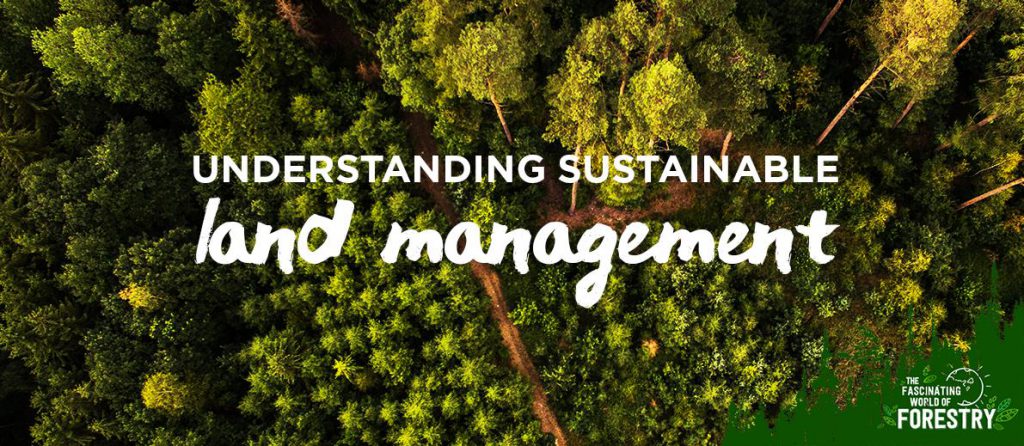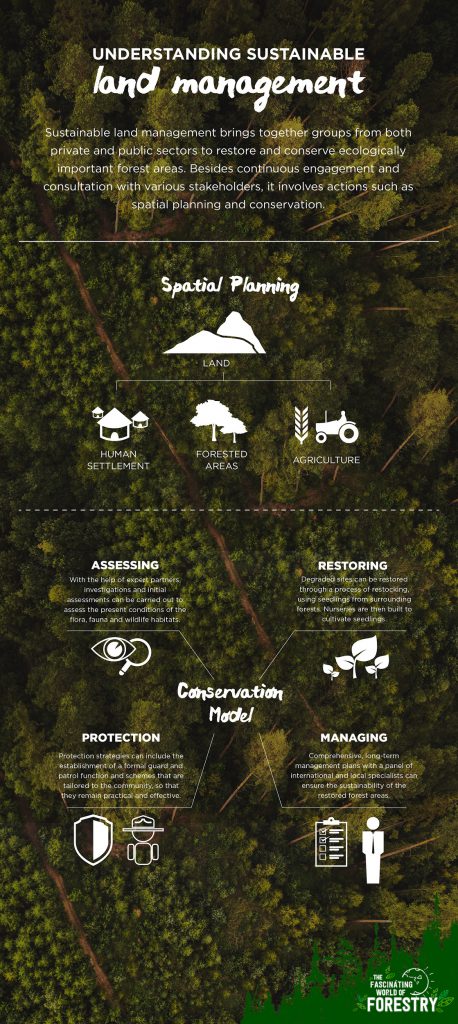
Indonesia is home to one of the earth’s most extensive and biologically diverse landscapes – the tropical rainforest. Besides being endowed with an abundance of flora and fauna, over 20 million people depend on Indonesia’s tropical rainforests for their livelihood.
The Need for Sustainable Land Management
In essence, in order for sustainable land management to be effective, it requires the collaboration between private and public sectors.. Through this active collaboration among partners that share a common, and crucial, environmental purpose, larger sections of previously logged and degraded forest areas can be protected.
Sustainable land management can also make a huge difference to the local economy, communities and the environment. Besides continuous engagement and consultation with various stakeholders, it involves actions such as spatial planning and conservation.
Spatial Planning
Spatial planning is the act of dividing a land up and allocating areas for different purposes, according to various stakeholders involved. For instance, the government of a country may allocate the land into different categories: human settlement and infrastructure, agriculture and forested area.
Using A Conservation Model
For the benefit and sustainability of future generations, forests are conserved, restored and protected against encroachment, land conversion and forest degradation. As different groups work collaboratively towards conservation efforts, an integrated landscape approach can help to ensure that multiple objectives are met. One example would be a four-phase conservation model pioneered by the Restorasi Ekosistem Riau (RER) project
1. Protecting the Landscape
Protection strategies can include the establishment of a formal guard and patrol function and schemes that are tailored to the community. This can be achieved by working with local community groups to ensure that solutions are practical and effective.
2. Assessing the Ecosystem And the Social Environment
With the help of expert partners, investigations and initial assessments can be carried out to assess the present conditions of the flora, fauna and wildlife habitats. This is also one way to ensure that the local community is involved.
3. Restoring Native Plant and Wildlife Species
Once protected and assessed, degraded sites can be restored through a process of restocking, using seedlings from surrounding forests. Nurseries are then built to cultivate seedlings collected from the wild before carrying out a program of staged replanting.
4. Managing For Sustainability
Developing comprehensive, long-term management plans with a panel of international and local specialists can ensure the sustainability of the restored forest areas. This also involves consultation with local communities, government and other stakeholders.

Forests make life possible. While we can do our part by playing an active role in supporting and promoting sustainable land management efforts, at the heart of it is community engagement and involvement. To read more on how RER carries out the restoration of peatland forest, head over to http://www.rekoforest.org/.
Sources:
http://theforestryeduportal.com
http://www.rekoforest.org/approach
